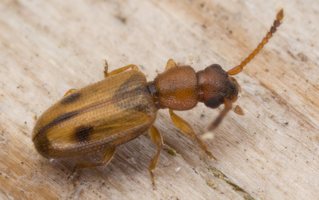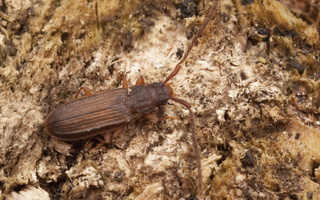- sort orderDefault
Photo title, A → Z
Photo title, Z → A
✔ Date created, new → old
Date created, old → new
Date posted, new → old
Date posted, old → new
Visits, high → low
Random - Google Map
- map
 home / Insecta · vabzdžiai / Coleoptera · vabalai / Silvanidae · aruodvabaliai
home / Insecta · vabzdžiai / Coleoptera · vabalai / Silvanidae · aruodvabaliai

- silvan flat bark beetles
- Raubplattkäfer
- aruodvabaliai
- šaurvaboļu dzimta
- spichrzelowate
Minta grybais, augalinės kilmės maistu. Yra sinantropų, mintančių grūdais, miltais, duonos produktais. Superfamily: Cucujoidea

